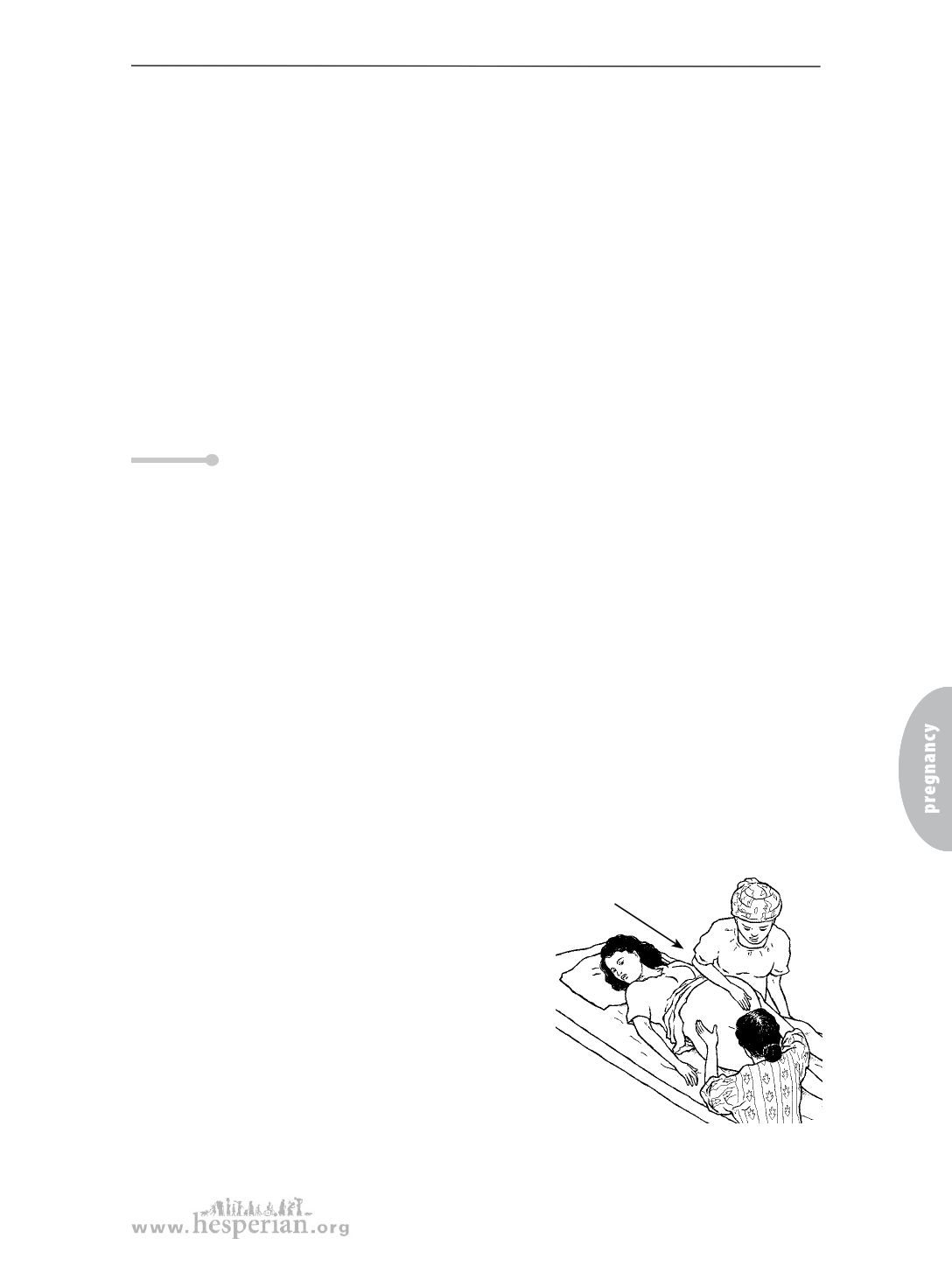
Check the baby
The due date you got by counting from the last monthly bleeding is wrong
There are several reasons why a due date figured from the last monthly bleeding
could be wrong. Sometimes women do not remember the date of their last monthly
bleeding correctly. Sometimes a woman misses her bleeding for another reason, and
then gets pregnant later. This woman could really be less pregnant than you
thought, so the womb is smaller than you expect. Or sometimes a woman has a
little bleeding after she gets pregnant. If you assumed that was her regular monthly
bleeding, this woman will be 1 or 2 months more pregnant than you thought. The
womb will be bigger than you expect.
If the due date does not match the size of the womb at the first visit, make a note.
Wait and measure the womb again in 2 to 4 weeks. If the womb grows about
1 to 2 finger widths a month or 1 centimeter a week, the due date that you got from
feeling the top of the womb is probably correct. The due date you got by figuring
from the last monthly bleeding was probably wrong.
Remember: Due dates are not exact. Women often give birth up to
2 or 3 weeks before or after their due date. This is perfectly safe.
The womb is growing too quickly
If the womb grows more than 2 finger widths a month or more than 1 centimeter a
week, several different causes are possible:
• The mother may have twins. See page 143 to learn how to tell if there are twins.
• The mother may have diabetes (see page 115).
• The mother may have too much water in the womb.
• The mother may have a molar pregnancy (a tumor instead of a baby).
Too much water in the womb
Too much water is not always a problem, but it can cause the womb to
stretch too much. Then the womb cannot contract enough to push the baby out
or to stop the bleeding after the birth. In rare cases it can mean that the baby will
have birth defects. To see if the mother has too much water,
try the thump test:
Have a helper put a hand along
the middle of the mother’s belly.
Put one of your hands on
one side of the mother’s belly.
Thump the other side of her
belly with your other hand.
If there is too much water inside, you may feel a
wave or ripple cross the belly from one side to the
other. (The helper’s hand keeps the wave from traveling
through the mother’s skin.) If there is too much water, get
medical advice. It may be safer for the mother to have the birth in a medical center.
133
A Book for Midwives (2010)